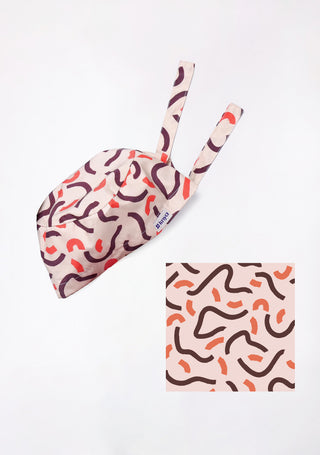Our stethoscope is one of the most essential tools in your clinical arsenal, but like any other medical equipment, it requires occasional reassessment. If you’ve noticed a dip in sound quality, increasing discomfort, or if your professional needs have outgrown your current model, don’t hesitate—it’s time to upgrade.
Not only will a better stethoscope improve your diagnostic abilities, but it also reinforces your commitment to providing the best care possible. After all, when you hear more, you help more.
You’re Struggling to Hear Clearly
Let’s face it—diagnosis begins with detection. If you’re constantly asking patients to breathe louder or repositioning the diaphragm multiple times just to catch a faint murmur or wheeze, your stethoscope may not be delivering the acoustic quality you need.
Common Symptoms:
- Faint or muffled heart and lung sounds
- Difficulty differentiating between subtle auscultatory findings
- Needing to press harder than usual to hear sounds
What Causes It?
Over time, the tubing can harden and crack, sound pathways can narrow due to dirt or blockage, or the diaphragm can wear out. Even the best stethoscopes degrade after years of use.
Why It Matters:
Auscultation is often the first step in diagnosing cardiovascular, respiratory, and gastrointestinal issues. If your stethoscope isn't giving you clarity, you risk missing crucial clues—or worse, misinterpreting them.
Upgrade Tip: Look for a stethoscope with advanced acoustic technology, adjustable frequency diaphragms, or digital amplification features if you’re in a specialty like cardiology or critical care.
Upgrade your auscultation capabilities with Knya's 6sense stethoscope, designed with advanced technology.
Physical Wear and Tear Is Affecting Performance
You’ve taken your stethoscope to every ward round, outpatient visit, and emergency call—but now, it’s starting to show. Torn earpieces, cracked tubing, and scuffed chest pieces are more than cosmetic issues. They compromise the functionality and hygiene of your tool.
Red Flags:
- Discolored or stiff tubing
- Loose or falling off earpieces
- Visible cracks or breaks in the diaphragm or bell
- Flimsy or sticky headsets
Why It Matters:
Even minor physical damage can affect how sound travels through the stethoscope, resulting in poor sound quality or distorted acoustics. Moreover, broken parts can cause discomfort or pose an infection control risk in clinical settings.
Upgrade Tip: Newer models often come with tubing resistant to skin oils and alcohol, and antimicrobial finishes to enhance infection control.
You’ve Advanced in Your Medical Career
Just like you wouldn’t expect a surgeon to use the same tools as a medical student, your stethoscope should evolve with your clinical expertise. If you've transitioned into a specialty—like cardiology, pulmonology, or intensive care—you need a stethoscope that supports more precise and complex auscultation.
Clues It’s Time:
- You’re working in noisy environments like ERs or ICUs
- You need to pick up specific sounds like S3 gallops or high-pitched wheezes
- You’re involved in teaching and want to share sounds with students
Why It Matters:
A basic stethoscope might be fine for general use, but it won’t meet the demands of specialized fields. Advanced models offer enhanced sound sensitivity and noise reduction, allowing you to perform more detailed assessments.
Upgrade Tip: Consider electronic or Bluetooth-enabled stethoscopes that offer amplified sound and even recording features for teaching or documentation.
Express your individuality while practicing medicine – discover our new 6sense Stethoscope collection, available in three beautiful color options.
Comfort Is Becoming an Issue
You may not think much about comfort until your stethoscope starts giving you a sore neck, pinching your ears, or dragging your lab coat off your shoulder like an attention-seeking toddler. If your stethoscope feels like more of a burden than a tool, it’s time to reassess.
Signs of Discomfort:
- Headaches or pressure after using the headset
- Ear irritation or pain after long shifts
- Stiff tubing making it difficult to manipulate the chestpiece
- A heavy chestpiece that tugs at your neck
Why It Matters:
Discomfort can compromise how often—and how thoroughly—you use your stethoscope. Worse, it can contribute to fatigue during already long clinical shifts. A well-designed stethoscope should feel like a seamless extension of your body, not a cumbersome gadget.
Upgrade Tip: Look for models with soft-sealing ear tips, lightweight construction, ergonomic headsets, and flexible tubing. Comfort isn’t a luxury—it’s part of good clinical practice.
You’re Ready to Embrace New Technology
Medical technology is evolving fast, and the humble stethoscope is no exception. If you're still using a classic analog model from your med school days, you might be missing out on features that could elevate your clinical practice.
What’s New?
- Digital Stethoscopes: Amplify sound, reduce ambient noise, and even allow you to record and visualize waveforms.
- Bluetooth Integration: Share auscultation sounds with colleagues or store them in electronic medical records.
- Telemedicine-Compatible Models: Help in remote assessments or collaborative diagnosis.
Why It Matters:
Healthcare is heading toward data-driven decision-making, and having a smart stethoscope can align your practice with modern demands. It's especially valuable in rural healthcare, home visits, and academic settings.
Upgrade Tip: Think of it as a long-term investment. A digital stethoscope with multi-feature support can save time, reduce diagnostic errors, and even enhance patient education.
When Sentimentality Gets in the Way
We get it—your current stethoscope might have been with you through med school exams, sleepless night shifts, and unforgettable patient encounters. But medicine is about evolving. If your emotional attachment to a stethoscope is holding you back from better performance, you owe it to your patients and yourself to let it go.
Keep the old one as a memento on your shelf, but bring a new, efficient, and tech-forward version into the field with you.













